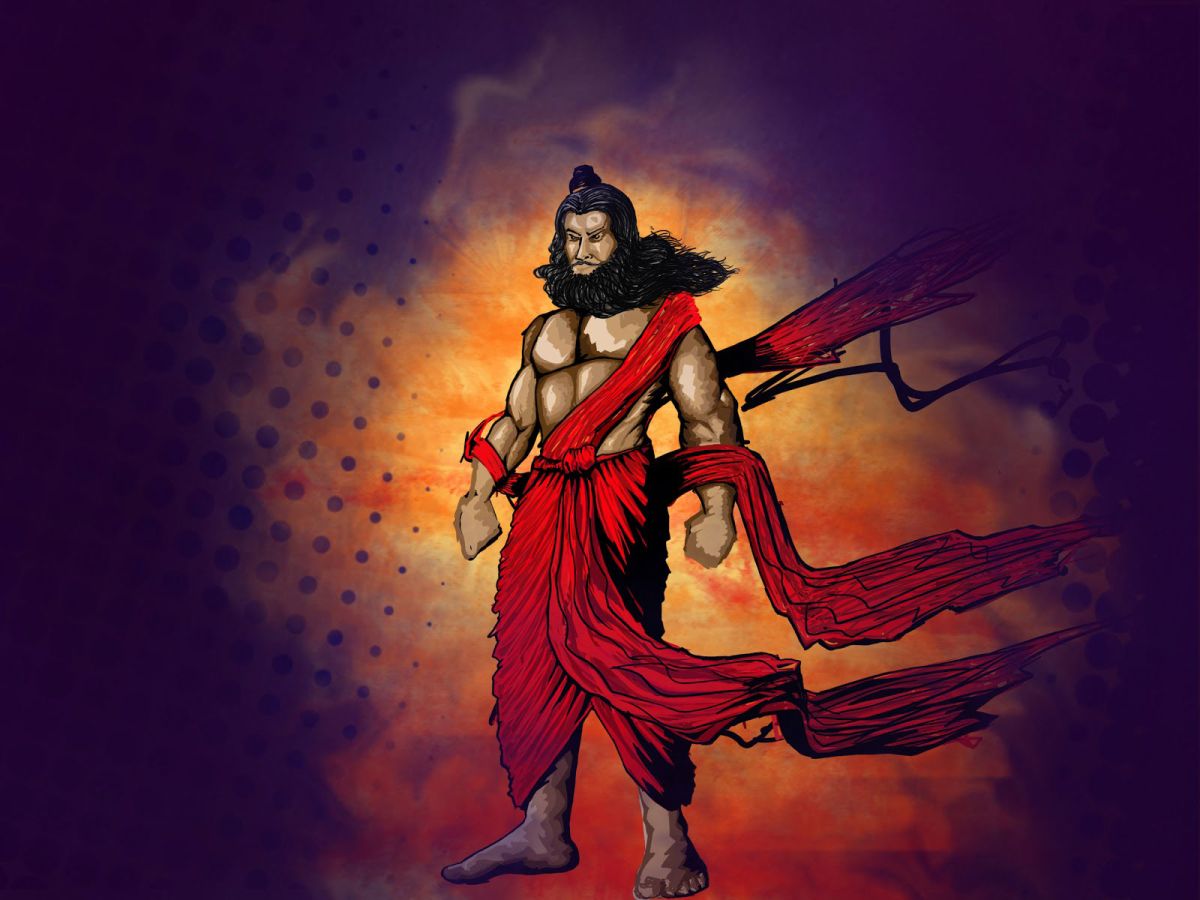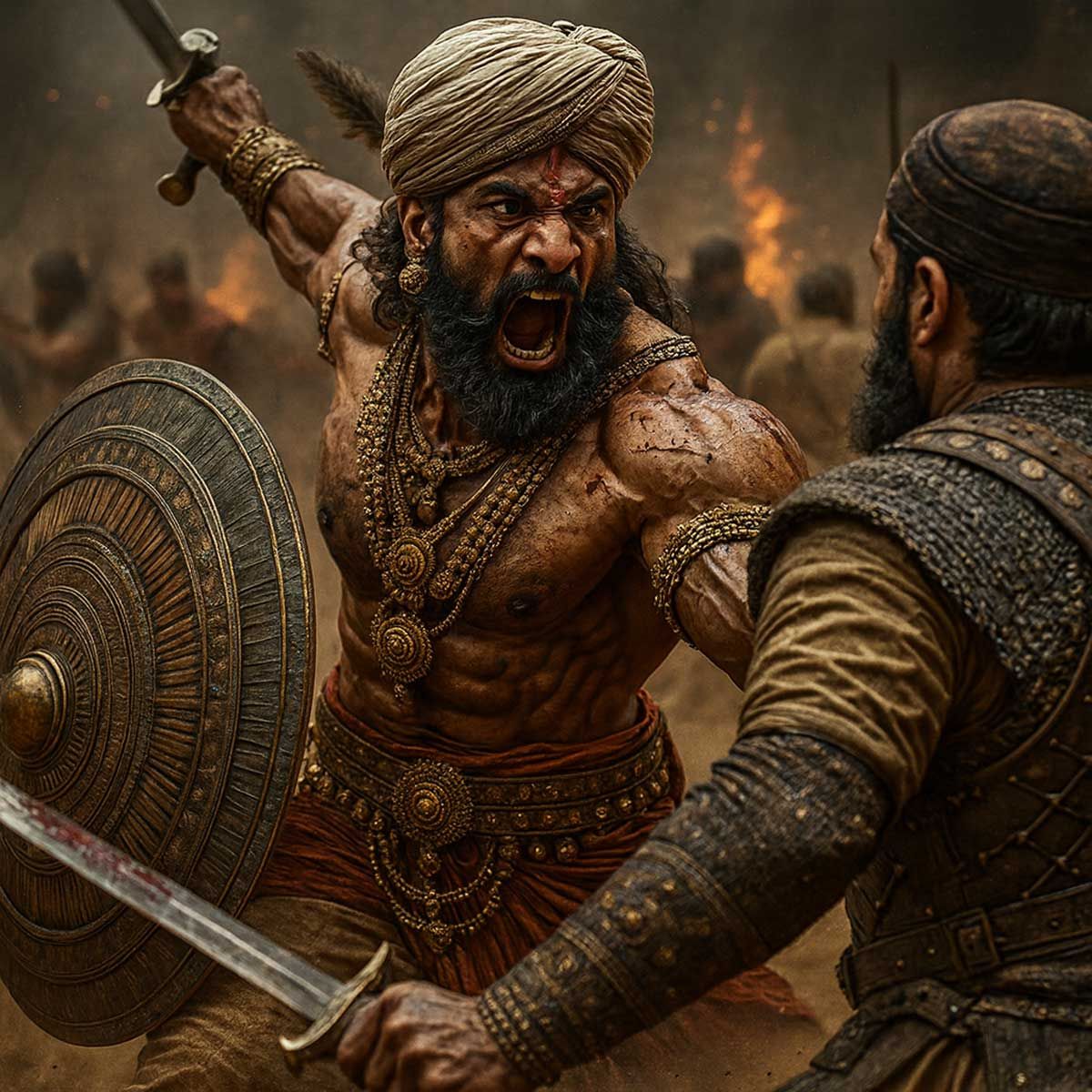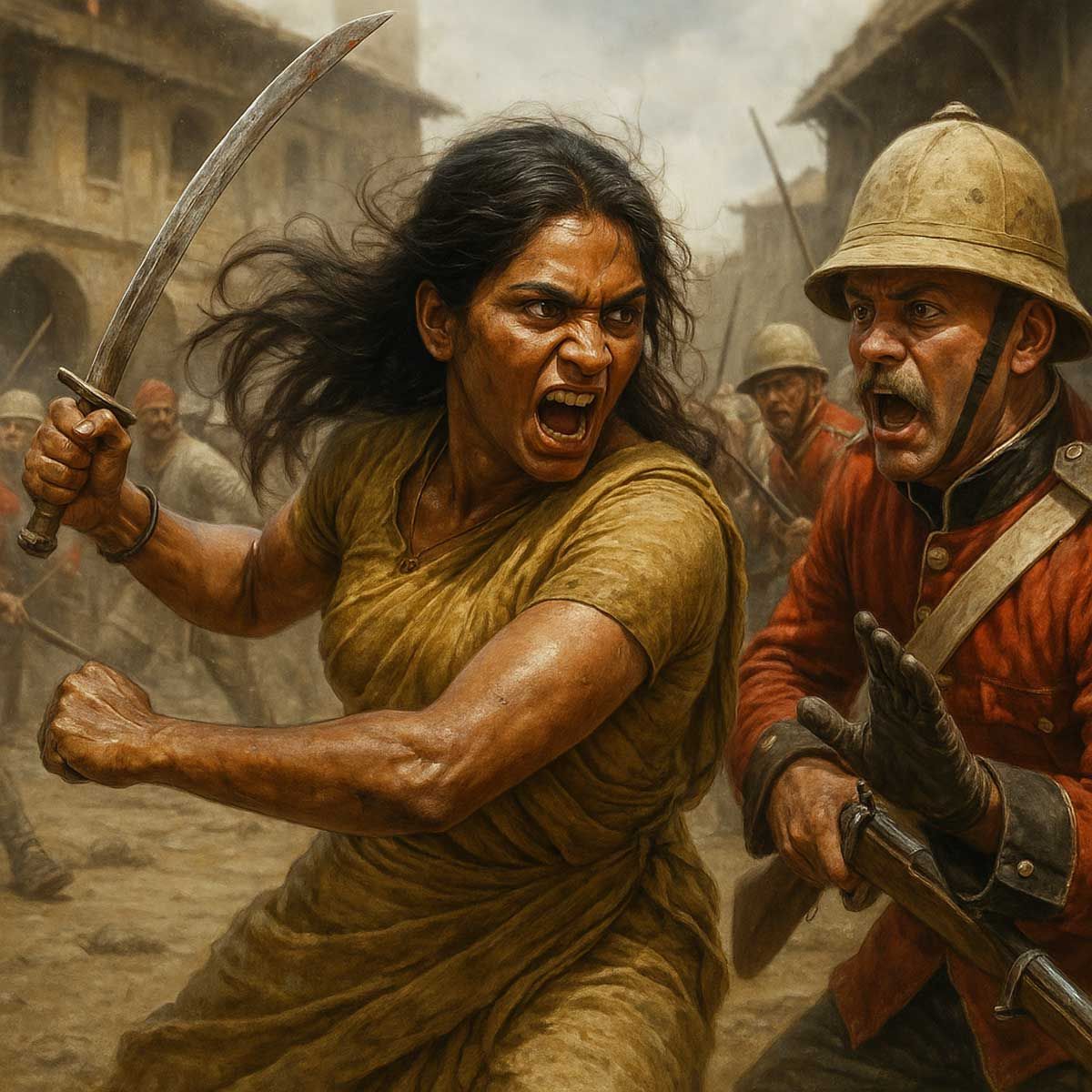More Coverage
Twitter Coverage
Satyaagrah
Written on
Satyaagrah
Written on
Satyaagrah
Written on
Satyaagrah
Written on
Satyaagrah
Written on
Join Satyaagrah Social Media
Bhagwan Parashurama – Chiranjeevi Avesha avatar of Bhagwan Vishnu

Bhagwan Sri Hari Vishnu descended to the earth from time to time for uplifting mankind. Bhagwan Parashurama is considered to be one among the Dashavatars (10 avatars/incarnations of Vishnu). Parashurama is more than just a sage who wielded a Parashu (axe) or one who annihilated Kshatriyas.
The birth story of Parashurama
Parashurama belongs to the lineage of Maharishi Bhrigu. Maharishi Bhrigu’s son Ruchik married Raja Gadhi’s daughter Satyavati. Once when Maharishi Bhrigu visited his son and daughter-in-law, the two served him well, and pleased with their service he told his daughter-in-law to ask for a wish.
She asked that both she and her mother be blessed with sons since her father Raja Gadhi had no son. Accordingly, Maharishi instructed his daughter-in-law that she and her mother were to embrace the Fig and Peepal trees respectively and consume the havishanna (special rice preparation) prepared exclusively for each of them. However, the two interchanged and exchanged the trees as well as the rice preparation.
Having learned of this, the Maharishi arrived at Satyavati’s place and told her that due to this interchanging she would give birth to a son who would have Kshatriya qualities while her mother would give birth to a son with Brahmin qualities. Satyavati then pleaded with her father-in-law to ensure that her grandson would be born with Kshatriya qualities instead of her son.
Maharishi blessed her and accordingly Satyavati gave birth to Jamadagni who went on to become a great sage learned in the Vedas and having knowledge of Dhanurveda which is considered one of the Upa-Vedas. On the other hand, Gadhi’s wife gave birth to a son who was none other than the great Rishi Vishwamitra.
Jamadagni married Raja Prasenjit’s daughter Renuka Devi who gave birth to five sons. The first four sons were Rumanvan, Susheshan, Vasu, and Vishwavasu. Their youngest son was named Rama, the sixth avatar (avesha avatar) of Bhagwan Sri Hari Vishnu who was also known as Bhargava Rama since he belonged to Maharishi Bhrigu’s lineage. Despite being the youngest, his qualities surpassed them all.
Bhagwan Parashurama obeys his father
When Jamadagni ordered his sons to slay their mother Renuka Devi for having committed a sin, his four elder sons refused to do so. But when Maharishi Jamadagni gave the same order to Parashurama, he did so without a moment’s hesitation. Pleased with his obedience, Jamadagni asked him to ask for whatever he wanted.
Parashurama asked his father to bring his dead mother back to life, ensure that she doesn’t remember that it was Parashurama who killed her, she doesn’t fall prey to such sin, his brothers who were cursed by their father return to their human form, no one should be able to face him in war, and that he lives a long life. His father granted him all his wishes.
Bhagwan Parashurama as an avesha avatar
Hindu Dharma talks about six types of avatars. Devarishi Narada explains the six types and says in the Smriti-shastra Maharishis headed by Bhagwan Ved Vyasa explain that Bhagwan descends in six forms: 1. amshamsha (part of part), 2. amsha (part), 3. avesha (entrance into a jiva), 4. kala (a full part), 5. purna (full), and 6. paripurnatama (most full).
Bhagwan Parashurama is an avesha avatar who has energies of both Bhagwan Shiva and Bhagwan Vishnu. Therefore, He is an avesha avatar of both Shiva and Vishnu Bhagwans. Bhargava Rama was meditating on Bhagwan Shiva atop the Himalayas. Mahadev appeared before him in the form of a hunter.
An argument ensued between the two but Rama realized that it was Bhagwan Shiva in the disguise of a hunter. He then sang a stotra in praise of Bhagwan Shiva. Pleased with Bhargava Rama’s devotion, Mahadev presented him a Parashu (axe) to protect innocent people who are victims of injustice. Hence, Bhargava Rama became Parashurama as he went around with the axe protecting them.
Once Mahadev called Parashurama and asked him to fight on the side of devas against rakshasas. Bhagwan Parashurama said “I don’t have anything except the axe that you gave me. I don’t know dhanur vidya, how am I to fight?” Mahadev replied, “My amsha will enter you (avesha) and I will function through you and you’ll also acquire knowledge of dhanurveda.” Shiva tattva gave Parashurama (avesha) Bhagwan Shiva’s power and thereby made Parashurama insurmountable in battle.
The battle between Bhagwan Parashurama and Bhagwan Ganesh
Having slain all the Kshatriyas, Parashurama went to Kailas to salute his Guru Mahadev and Guru’s wife Devi Parvati. However, since the two were resting, Ganesh refused to allow Parashurama to enter. Their argument turned into a battle in which Bhagwan Parashurama threw his axe at Ganesh and broke his tooth.
Seeing her son injured, Devi Parvati became angry with Parashurama. On the advice of Bhagwan Vishnu, Parashurama sang the praise of Devi Durga to calm her anger. After having done the pooja of Mahadev and Parvati Devi and gaining their blessings, Parashurama returned to his home.
Chiranjeevi Bhagwan Parashurama
Parashurama is one of the eight Chiranjeevis who inhabit the earth and will dwell here till the end of this Yuga. His abode is atop Mahendragiri parvat where he lives to this day. After having given away the earth to Maharishi Kashyap, Bhagwan Parashurama asked the sea for a place to dwell.
The sea then told him to throw his axe and that he (the sea) would recede up to that point thereby giving land for Parashurama to live. The land reclaimed by Parashurama from the sea is known as Parashurama Kshetra which includes coastal areas of Kerala, Karnataka (Mangalore), Goa, Konkan, and Maharashtra.
Parashurama was a great teacher who trained the likes of Bhishma Pitamaha and Dronacharya. He is said to be meditating in a cave atop Mahendra parvat and gives darshan on Chaturdashi tithi. Bhagwan Parashurama is the epitome of parental devotion and bravery and worshipping him is said to rid devotees of all forms of tribulations and troubles.
अग्रतः चतुरो वेदाः पृष्ठतः सशरं धनुः ।इदं ब्राह्मं इदं क्षात्रं शापादपि शरादपि ।।
Means: One Knows four Vedas by heart, Has arrows and bow on the back, has both, radiance of Brahma and of Kshatriya; Bhagwan Shri Parashuram will defeat anyone that opposes him, either by a curse or by shooting an arrow. There are several legends about Bhagwan Shri Parshuram, the 6th reincarnation of Shri Vishnu found in the Holy texts, Ramayan, Mahabharat and some Puranas. This is the only Avatar of Lord Vishnu which is considered as immortal. Bhagwan Parshuram is one of the seven persons who are considered as immortal (sapta-chiranjeev).
 Support Us
Support Us
Satyagraha was born from the heart of our land, with an undying aim to unveil the true essence of Bharat. It seeks to illuminate the hidden tales of our valiant freedom fighters and the rich chronicles that haven't yet sung their complete melody in the mainstream.
While platforms like NDTV and 'The Wire' effortlessly garner funds under the banner of safeguarding democracy, we at Satyagraha walk a different path. Our strength and resonance come from you. In this journey to weave a stronger Bharat, every little contribution amplifies our voice. Let's come together, contribute as you can, and champion the true spirit of our nation.
 |  |  |
| ICICI Bank of Satyaagrah | Razorpay Bank of Satyaagrah | PayPal Bank of Satyaagrah - For International Payments |
If all above doesn't work, then try the LINK below:
Please share the article on other platforms
DISCLAIMER: The author is solely responsible for the views expressed in this article. The author carries the responsibility for citing and/or licensing of images utilized within the text. The website also frequently uses non-commercial images for representational purposes only in line with the article. We are not responsible for the authenticity of such images. If some images have a copyright issue, we request the person/entity to contact us at This email address is being protected from spambots. You need JavaScript enabled to view it. and we will take the necessary actions to resolve the issue.
Related Articles
- Birsa Munda: The tribal folk hero who was God to his people by the age of 25
- An Artisan Heritage Crafts Village: Indigenous Sustainability of Raghurajpur
- History books should teach India’s civilisational, linguistic heritage, not unfounded claims: Parliamentary Committee meets to discuss NCERT books
- अथ रामचरितमानस प्रकाशन कथा: गीता प्रेस, गोरखपुर ने 1938 से रामचरितमानस का प्रकाशन शुरू किया
- Jagannath Temple administration issues clarification on proposed sale of temple lands
- The forgotten temple village of Bharat: Maluti
- A new symbol of Hindutva pride, Shri Kashi Vishwanath Temple Corridor
- Unsung Heroine Pritilata Waddedar, Who Shook The British Raj at the age of 21
- Why Hindus not claiming their temples back from the Government control: Is pro-Hindu govt will always be in power
- Why India’s temples must be freed from government control
- The Forgotten Story of Rani Abbakka Chowta, the Fearless Warrior Queen of Tulu Nadu
- Culture And Heritage - Meenakshi Temple Madurai
- Righteousness vs Loyalty: Prince Rama obeys his father and leaves the Ayodhya kingdom
- A Different 9/11: How Vivekananda Won Americans’ Hearts and Minds
- रामचरितमानस एवं उसके अंग्रेजी अनुवाद तथा हिंदी के अकेडमिक्स का दोहरा रवैया
























